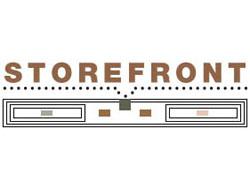Store Front - June 2006
By Sonna Calandrino
One thing seems certain in these uncertain times: The business landscape is changing. Just look at the Boston Consulting Group’s analysis of the top 25 innovative companies in the April 24th issue of Business Week. Toyota came out fourth, beating the old standbys—Ford, Chrysler and GM. Copyright 2006 Floor Focus Inc
Have the old standbys been doing just that...standing by?
Enter Jack and Suzy Welch with their book Winning and what it takes to finish first. (Jack is the legendary former head of GE during its high-flying days.) They say that being tough and innovative is one secret to building a successful company. For decades, Toyota has been described as a “relentless” innovator, breaking things so they need fixing, and in general, being a tough company.
Now let’s bring this all back to our industry. In order to be tough and innovative, you need good employees. In our business, retailers are forever lamenting about how difficult it is to find and keep good employees. Well, finding good employees isn’t really that hard; it’s hiring, training and holding onto them that seems to be the challenge.
The first challenge is to help employees get in touch with their dreams and aspirations and then show them the way to realize those dreams. But how far should an employer go?
Jack Welch says there are employers who want everyone to be happy, those who don’t care if anyone’s happy, and then there’s the rest, who are somewhere in the middle.
There’s a fine line between keeping everyone happy and running a good business. The problem with employers who want everyone happy is that they’re often the ones who complain that their salespeople keep dropping prices and ruining their margins. Dig a little deeper and you’ll probably find that this owner reveals product costs to his or her salespeople and basically lets them determine the price the customer will pay.
These types of bosses seem easy to work for because they never really take up any issues and they always treat everyone the same. Often they don’t pay commission, but they’ll talk about their great team—and they’ll come to find they’ve collected mediocre salespeople with no goals or aspirations.
By letting the sales force decide how to drop prices, owners are allowing their salespeople—not management!—to determine how much profit the business has at the end of the year.
Worse yet, let’s not forget that uncollected balances become costly receivables. This is just another form of how the “nice” policy—which dictates that we can’t ask people to pay for the job before it’s done—can hurt your business.
You may recognize other forms of the “nice retailer,” but at some point, the cash flow stops flowing and the rules change.
Our everyone-should-be-happy owner may evolve into another familiar retailer—the nobody-will-be-happy type. These owners appear to have a private agenda which benefits only them. They may resort to belittling employees and making known they have no intention of sharing any of the profits. As the Welches say in their book, these types may get results, but not lasting ones, other than high turnover and lots of complaints.
Between these two extremes is the boss looking for long term results. How should he or she approach this challenge?
First, let’s take away the price book! Sure there’ll be some complaints, but you’ll create a situation that shows who can and who can’t sell. If someone isn’t selling, it may not be because he or she can’t. It may be because they haven’t been taught to truly sell product, and price is all they know. This presents an opportunity for training—and building a better and more profitable sales force. You’re likely to have to do a lot of training, and quickly, but it will pay off in the long run in the form of more sales, better sales, higher tickets and, of course, better margins.
An effective leader will determine store policy and goals and stick to them. Statistics tell us that the number one reason employees leave is because of unclear expectations. Let’s determine what you want and stick by it. What good is a well-trained sales staff if they’re given poor or unclear direction?
Set clear goals. State what you want from your employees, and let them know you’ll help them succeed. If an employee, new or old, looks promising, invest in that person and do what it takes to make him or her sell better. The more they make, the more you make!
And don’t treat everyone the same. If you do, your star performers will leave, and you’ll be left with compliant yet costly non-achievers. Reward winners. Teach the others or get rid of them! Give people a chance to “get good” by showing them you’re willing to put your money into their training. And let them know you’re investing in them.
Think of it this way: Investing in your employees is like taking a trip. You first need to know where you want to be (more profitable), then you have to plot the best route to get there (setting goals and training to achieve those goals).
We have to determine what return we want on our employee investment. Will it be more sales, bigger tickets, higher margins, less turnover, better customer service, more repeat business? Then, what’s the best path to profitability? Better employee rewards for high achievers? Targeted training? Jettisoning the non-producers?
To be successful, it’s OK to be tough as long as you’re consistent and set goals for achievable results.
